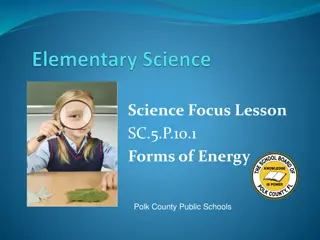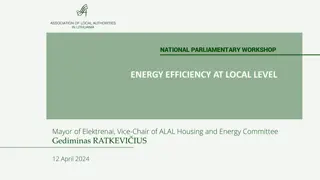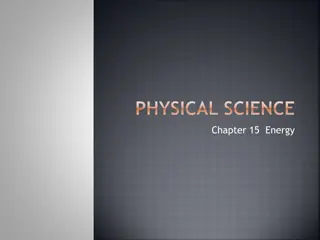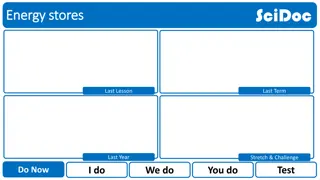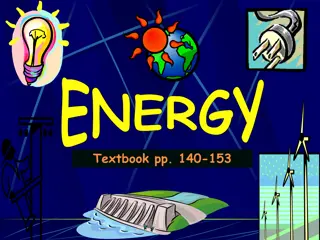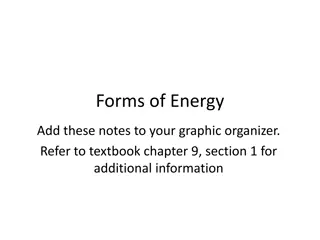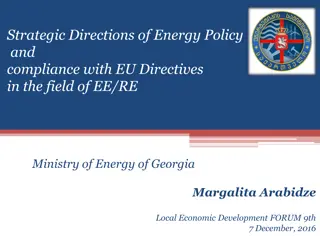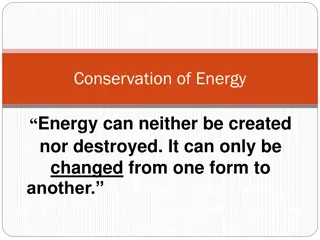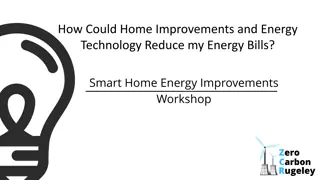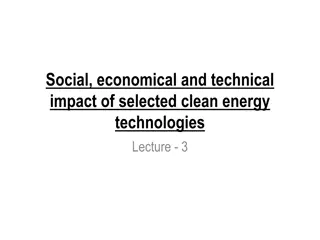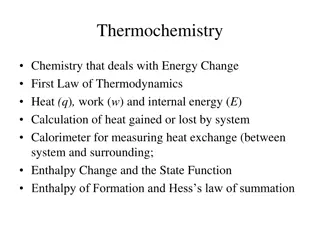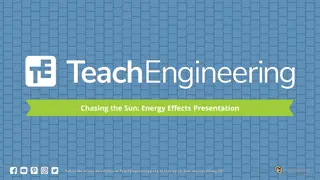Energy and Its Forms
Energy is the ability to do work and is essential for all living beings. It exists in various forms such as kinetic, potential, thermal, chemical, and electrical energy. This article explores different types of energy, their sources, and how they are utilized in our daily lives.
Download Presentation

Please find below an Image/Link to download the presentation.
The content on the website is provided AS IS for your information and personal use only. It may not be sold, licensed, or shared on other websites without obtaining consent from the author. Download presentation by click this link. If you encounter any issues during the download, it is possible that the publisher has removed the file from their server.
E N D
Presentation Transcript
Objectives: Understand what energy is. Know the different types of energy.
What do you think Energy is?
What is Energy? Energy is the ability to do work. It is what makes matter move or change. The unit of energy: The unit of energy is Joules, and it is often measured in Kilo joules. 1000 Joules = 1 KJ
All the energy stored in the food and fuels comes basically from the sun. Keeping your body warm, moving, and talking all need energy. Children need energy to grow bigger bones, muscles and brains. About three quarters of the energy that you need every day is for processes in the body like breathing. You then need more energy for all the other activities that you do such as walking, running or swimming.
Forms of energy: Can you think of some forms of energy around you? https://www.youtube.com/watch?v=63t0Y2A Coh4
Types of energy: There are many different types of energy, but they can be categorized into two main forms:
Energy Potential (Stored) Kinetic (Motion) Kinetic (Movement) Energy Chemical Energy Thermal (Heat) Energy Gravitational Energy Light Energy Elastic Energy Sound Energy Electrical Energy
Forms of Kinetic Energy: 1- Kinetic (Movement) energy: Is the energy an object has because of its motion. A fast-moving object has more kinetic energy than a slow- moving object. Examples of kinetic (movement) energy include wind, a flowing river, a moving car, or a person running.
Forms of Kinetic Energy: 2- Electrical energy: The energy from the flow of electrons in an electric circuit through a wire.
Forms of Kinetic Energy: 3-Thermal (Heat) energy: The internal energy of a substance due to the vibration of atoms. The faster they move, the more energy they have and the hotter they become.
Forms of Kinetic Energy: 4-Light energy: Have you ever thought how can light be used to make food? It is easy to think of light as something that exists and allows living organisms, such as humans, to see. Light energy moves in waves and it is the only form of energy visible to the human eye. Examples of light (radiant) energy is the sun, light bulbs and even headlights on cars.
Forms of Kinetic Energy: 5-Sound energy: The movement of sound waves through substances, and is produced when a force makes an object or substance vibrate.
Forms of Potential Energy: 1- Chemical energy: The energy stored in the bonds between atoms that holds them together. Stored chemical energy is found in food, batteries, petroleum, and natural gas.
Forms of Potential Energy: 2- Gravitational energy: The energy an object has when it is in a high position compared to a lower position. An object with a bigger mass has more gravitational potential energy.
Forms of Potential Energy: 3- Elastic energy: Elastic energy is a form of potential energy which is stored in an elastic object; such as a coiled spring or a stretched elastic band. Elastic objects store elastic energy when a force causes them to be stretched or squashed.

 undefined
undefined



